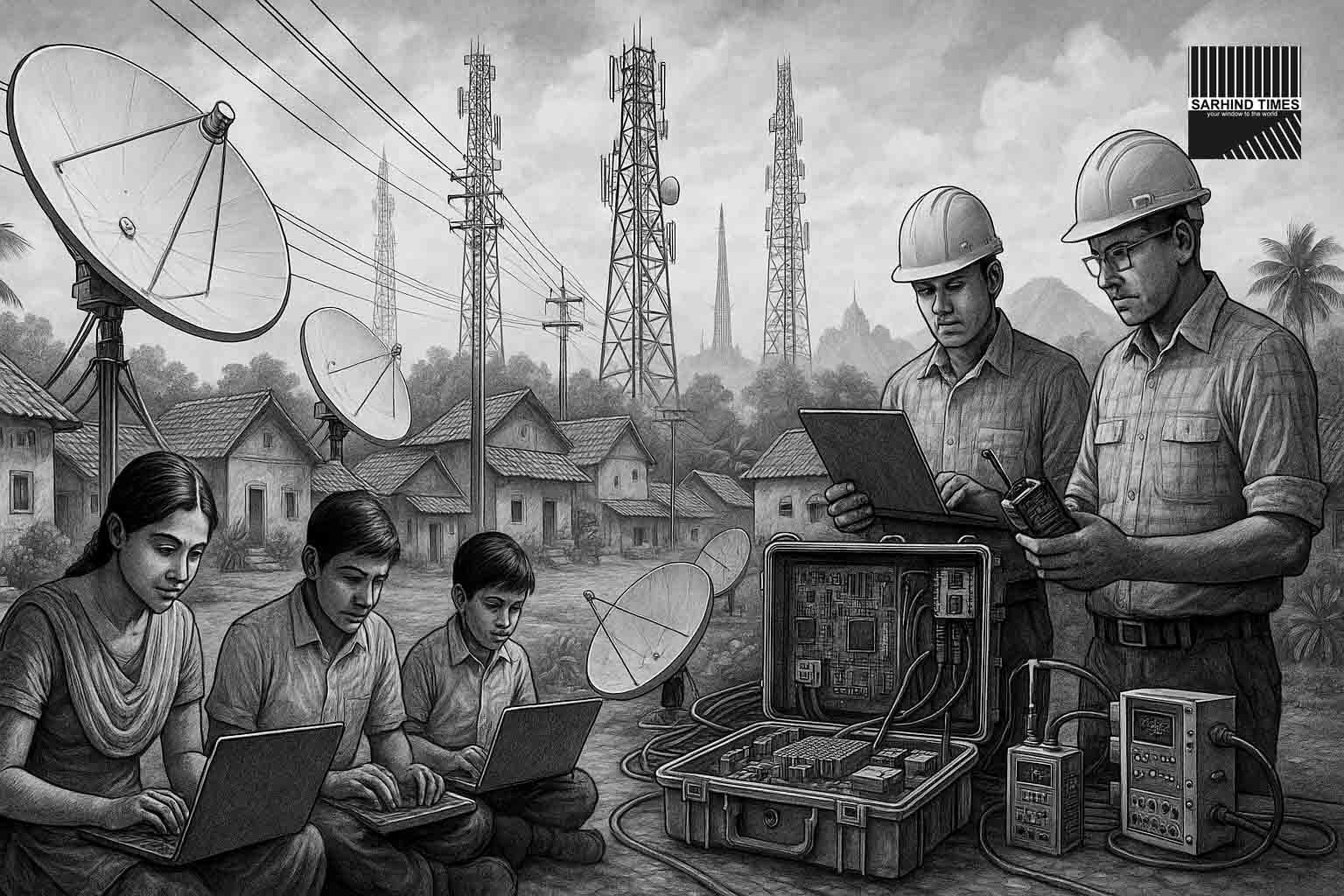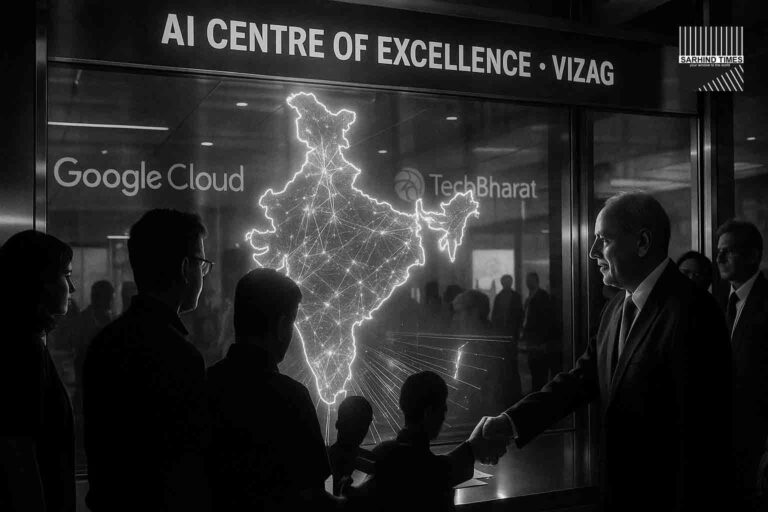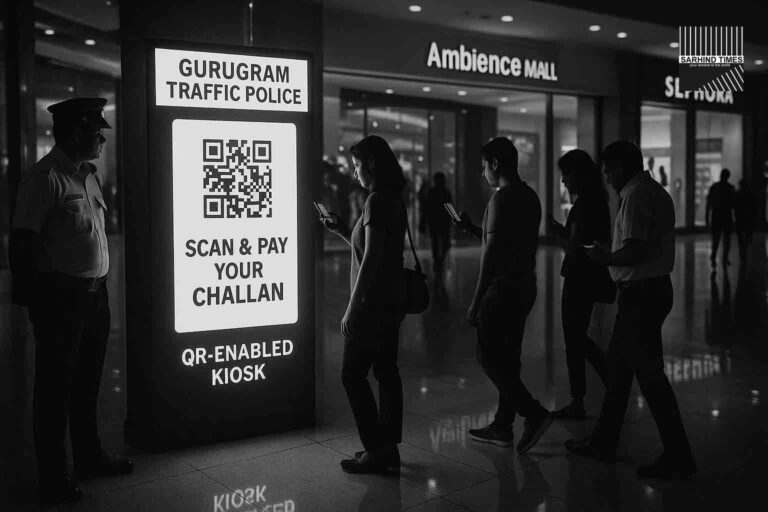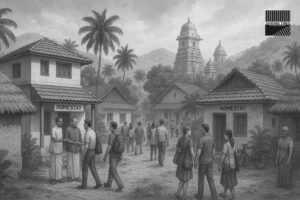Amaravati/New Delhi, September 29 (Sarhind Times Bureau):
In a strong pitch for self-reliance in India’s digital future, Andhra Pradesh Chief Minister N. Chandrababu Naidu on Saturday endorsed the indigenous rollout of BSNL’s 4G network while urging students and entrepreneurs to focus on building intellectual property (IP).
Speaking at a virtual ceremony marking the launch of BSNL 4G in 108 villages nationwide—including 10 in Andhra Pradesh—Naidu linked telecom innovation to India’s broader economic transformation. He cited the success of UPI and India’s digital public infrastructure as benchmarks to emulate in telecom, artificial intelligence, and quantum technologies.
The launch, inaugurated by Prime Minister Narendra Modi, is part of BSNL’s ambitious plan to expand coverage across 97,500 locations, bringing affordable connectivity to some of the remotest corners of the country.
Indigenous 4G: A Symbol of Self-Reliance
The rollout marks a milestone in India’s telecom sector, traditionally dependent on foreign vendors. By deploying homegrown 4G technology, BSNL aims to:
- Strengthen national security by reducing foreign dependencies.
- Foster domestic R&D and hardware manufacturing.
- Lay the groundwork for 5G expansion and eventual 6G pilots.
Naidu described the initiative as “a crucial step toward making India not just a user but a global innovator in telecom infrastructure.”
Naidu’s Call to the Youth
During his remarks, Naidu urged young Indians to:
- Develop patentable technologies in telecom and beyond.
- Build indigenous alternatives to global hardware and software.
- Leverage platforms like “Amaravati Quantum Valley” for deep-tech research.
“The future is not about importing technology but exporting Indian IP. If we can create UPI for payments, why not build indigenous telecom standards for the world?” Naidu said.
The Larger Context: India’s Telecom Journey
India has one of the world’s largest telecom markets, with over 1.1 billion subscribers. However, most network equipment historically came from global giants like Ericsson, Nokia, Huawei, and ZTE.
- The Make in India push seeks to reverse this dependency.
- Indigenous 4G is being seen as a test bed for future self-reliance in 5G and 6G.
- Pilot projects on 6G, AI-driven networks, and quantum encryption are already in the pipeline.
Digital Public Infrastructure as a Model
Naidu highlighted UPI, Aadhaar, and India Stack as proof that India can design world-class systems. Analysts say these platforms provide a blueprint for telecom innovation:
- Open architecture for broad adoption.
- Interoperability across devices and services.
- Public-private partnerships to scale quickly.
The ambition is clear: replicate the “UPI moment” in global telecom.
Balancing Domestic and Global Supply Chains
While the push for indigenous technology is gaining momentum, experts caution that global supply chains—particularly in semiconductors and network chips—remain critical.
- Short-term: India must continue sourcing key components abroad.
- Medium-term: Incentivize domestic fabs and chip design firms.
- Long-term: Achieve full-stack independence from silicon to software.
This balance is expected to shape policy debates as India gears up for 6G pilots by 2030.
Industry and Expert Reactions
- Telecom Industry Association: Welcomed the move, stressing that “local R&D can cut costs and ensure security.”
- Startups: See opportunities in software-defined networking, IoT solutions, and rural telecom hardware.
- Academia: Institutions in Andhra Pradesh and Karnataka are launching research clusters tied to the Amaravati Quantum Valley vision.
Dr. Radhika Iyer, telecom policy expert: “India’s telecom future depends on whether we can convert this into a pipeline of patents, not just rollouts.”
Amaravati Quantum Valley: A Future Hub
Naidu underscored that Amaravati Quantum Valley will serve as a nucleus for AI, quantum, and deep-tech innovation. The initiative aims to attract global talent while nurturing Indian startups in frontier technologies.
Planners envision:
- Quantum communication prototypes for secure networks.
- AI-driven network optimization tools.
- Collaboration between universities, startups, and industry leaders.
Challenges on the Road
Despite optimism, hurdles remain:
- Funding gaps in domestic telecom R&D.
- Competition from global giants with decades of experience.
- Skill shortages in advanced semiconductor design.
- Policy uncertainty on spectrum allocation and pricing.
Observers stress that success will require a cohesive ecosystem of government support, private investment, and grassroots innovation.
The Geopolitical Dimension
India’s telecom push also has geopolitical undertones:
- Strategic autonomy: Reducing reliance on Chinese vendors.
- Global standing: Joining the league of nations shaping telecom standards.
- Alliances: India is collaborating with the U.S., Japan, and EU on Open RAN and 6G research.
Conclusion
The launch of BSNL’s indigenous 4G is more than a network upgrade—it is a statement of intent. With leaders like Naidu championing innovation, India is positioning itself not just to consume but to create the telecom infrastructure of the future.
For students, startups, and entrepreneurs, the message is clear: the next big leap lies in building IP, patents, and globally competitive technology from Indian soil.
#BSNL #4G #MakeInIndia #Telecom #Innovation #6G #SarhindTimes #DigitalIndia

























+ There are no comments
Add yours